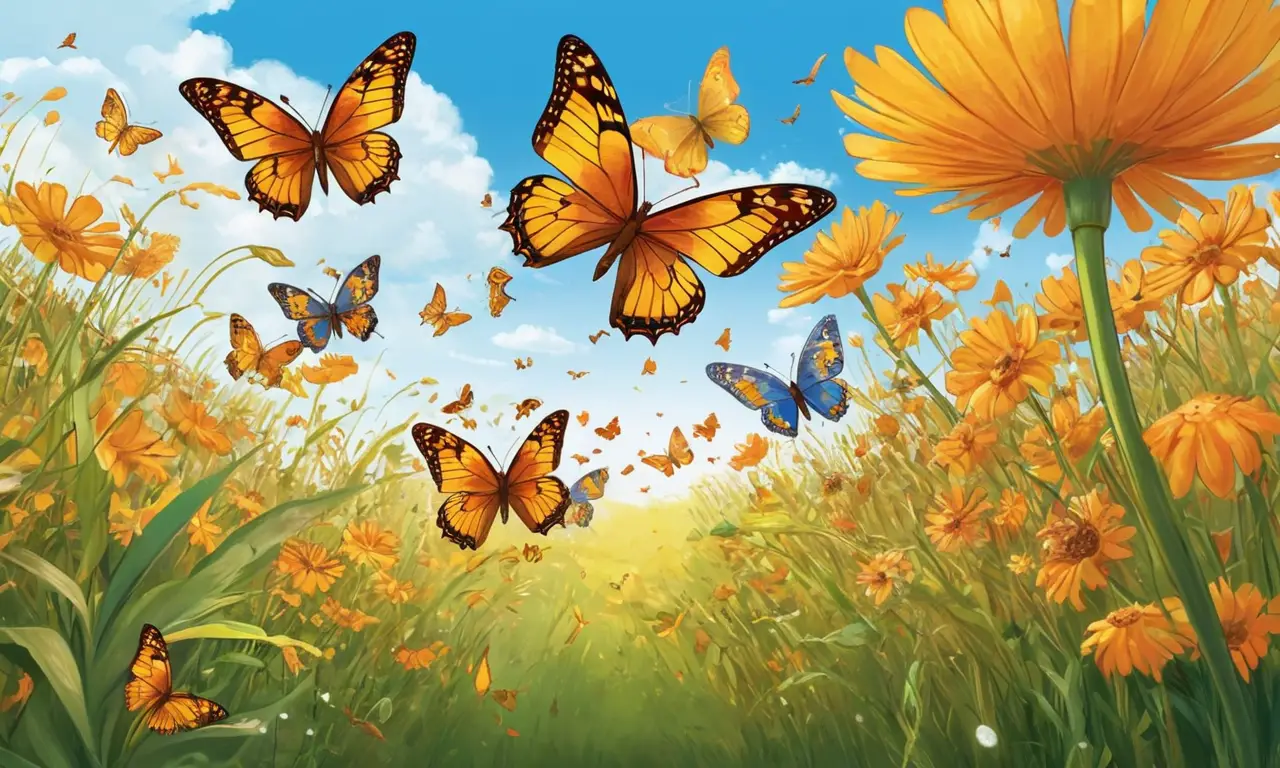
Have you ever wondered why these beautiful creatures are called butterflies? Their name, seemingly simple, holds a fascinating history rooted in their appearance and the way they move. This article delves into the origins of the word “butterfly,” exploring its linguistic roots and the reasons behind this captivating moniker. We’ll uncover how the vibrant colors and graceful flight patterns of these insects contributed to their enduring name.
This exploration will take us through the evolution of the word “butterfly,” starting with its Old English origins and examining the meaning behind the phrase “butter-colored fly.” We’ll also discuss how butterfly colors and flight patterns have influenced our perception of these enchanting creatures, ultimately solidifying the name “butterfly” as a beloved term for these winged wonders.
Butterfly Names
Butterflies, those captivating insects with their vibrant wings and delicate movements, have captivated humans for centuries. Their names vary across cultures and languages, reflecting diverse perceptions and beliefs surrounding these fascinating creatures. In English, the common name “butterfly” has become synonymous with these winged beauties, but its origins lie in a rich linguistic history.
The term “butterfly” is widely recognized and used globally, highlighting the universal appeal of these insects. However, other cultures have unique names for butterflies, often reflecting their specific characteristics or cultural significance. For example, in some Native American languages, butterflies are associated with transformation and rebirth, while in others, they symbolize joy and happiness.
These diverse names demonstrate the profound impact butterflies have had on human culture and imagination, inspiring a range of interpretations and associations across different societies.
Origin of “Butterfly”

The name “butterfly” has its roots firmly planted in the history of the English language. It emerged from the Old English word “buttorfleoge,” which literally translates to “butter-colored fly.” This linguistic origin provides valuable insight into the reasons behind the butterfly’s enduring name.
The term “buttorfleoge” highlights the striking visual impact butterflies have on observers. Their vibrant colors, often resembling butter or other creamy hues, captivated early English speakers, leading them to associate these insects with this rich and appealing color.
Old English Word “Buttorfleoge”
The Old English word “buttorfleoge” is a fascinating example of how language evolves to reflect the world around us. The term “buttor,” meaning “butter,” speaks to the common occurrence of yellow or orange hues in many butterfly species.
The second part of the word, “fleoge,” refers to “fly,” indicating the insect’s characteristic mode of movement. Together, these two elements create a vivid and descriptive image of the butterfly: a creature with wings resembling butter, gracefully flitting through the air.
Meaning of “Butter-Colored Fly”

The phrase “butter-colored fly” encapsulates the essence of the butterfly’s visual appeal. The color “butter,” often associated with warmth, richness, and beauty, perfectly captures the vibrant hues found on many butterfly wings.
This association with butter further emphasizes the delicacy and elegance of butterflies. Just as butter is a prized ingredient known for its smooth texture and subtle flavor, butterflies are admired for their graceful movements and intricate wing patterns.
Butterfly Colors and Flight Patterns
The vibrant colors and mesmerizing flight patterns of butterflies have undoubtedly contributed to their enduring name. Their wings often display a dazzling array of hues, ranging from sunny yellows and fiery oranges to deep blues and rich purples.
These colors serve various purposes, including attracting mates, camouflaging themselves from predators, and signaling warnings to potential threats. Furthermore, the delicate fluttering of butterfly wings creates an ethereal and captivating spectacle, further enhancing their allure.
Conclusion
The name “butterfly” is a testament to the enduring fascination humans have with these winged wonders. Its origins lie in the Old English phrase “butter-colored fly,” reflecting the striking visual impact butterflies have on observers. Their vibrant colors, often resembling butter, and graceful flight patterns have solidified this moniker as a beloved term for these enchanting creatures.
